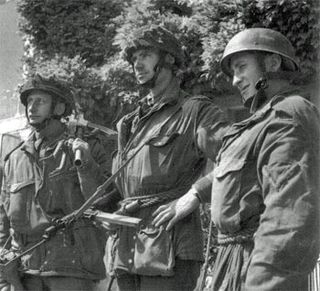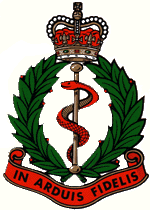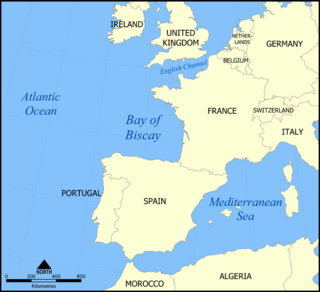| Personal information | |||||||||||||||
|---|---|---|---|---|---|---|---|---|---|---|---|---|---|---|---|
| Nationality | |||||||||||||||
| Born | 29 October 1913 Oxford | ||||||||||||||
| Died | 10 July 1943 (aged 29) | ||||||||||||||
Medal record
| |||||||||||||||
Basil Saunders Beazley (1913-1943) was a male rower who competed for England.
| Personal information | |||||||||||||||
|---|---|---|---|---|---|---|---|---|---|---|---|---|---|---|---|
| Nationality | |||||||||||||||
| Born | 29 October 1913 Oxford | ||||||||||||||
| Died | 10 July 1943 (aged 29) | ||||||||||||||
Medal record
| |||||||||||||||
Basil Saunders Beazley (1913-1943) was a male rower who competed for England.
Beazley represented England and won a gold medal in the eights at the 1938 British Empire Games in Sydney, New South Wales, Australia. [1] [2]
He was an electrical engineer by trade and lived in Newport Road, Cardiff during 1938. He was killed during World War II, in 1943 when serving as a Major with the Royal Engineers and is buried at the Syracuse War Cemetery in Sicily. [3]
9 Field Company RE (Airborne) took part in the glider landing operation (Operation Ladbroke) to facilitate the Allied Invasion of Sicily on Operation Husky. As part of the 1st Airlanding Brigade, 9 Field Company RE (Airborne) were some of the first troops to arrive after departing from Malta at 6pm on 9 July. Due to high winds, misjudgement from pilots and friendly fire from allied ships, the majority of the gliders landed in the sea. One successful glider containing sappers of 9 Field Company under command of Maj Basil Saunders Beazley landed in a tomato plantation near Ponte Grande. They fought through to the bridge under enemy fire. The bridge was captured at 5am, the demolition charges drawn, and the area held, in spite of counterattacks by the Italians. The embattled sappers held out until the arrival of 5th Division on 10 July. Of the total strength of 8 officers and 65 men, only 19 survived. [4] Maj Basil Saunders Beazley was killed in action on the afternoon of 10 July. [5]

Operation Tonga was the codename given to the airborne operation undertaken by the British 6th Airborne Division between 5 June and 7 June 1944 as a part of Operation Overlord and the D-Day landings during the Second World War.

Operation Ladbroke was a glider landing by British airborne troops during the Second World War near Syracuse, Sicily, that began on 9 July 1943 as part of Operation Husky, the Allied invasion of Sicily. The first Allied mission using large numbers of the aircraft, the operation was carried out from Tunisia by glider infantry of the British 1st Airlanding Brigade, commanded by Brigadier Philip Hicks, with a force of 136 Hadrians and eight Airspeed Horsas. The objective was to establish a large invasion force on the ground near the town of Syracuse, secure the Ponte Grande Bridge and ultimately take control of the city itself with its strategically vital docks, as a prelude to the full-scale invasion of Sicily.

Operation Fustian was an airborne forces operation undertaken during the Allied invasion of Sicily in July 1943 in the Second World War. The operation was carried out by Brigadier Gerald Lathbury's 1st Parachute Brigade, part of the British 1st Airborne Division. Their objective was the Primosole Bridge across the Simeto River. The intention was for the brigade, with glider-borne forces in support, to land on both sides of the river. They would then capture the bridge and secure the surrounding area until relieved by the advance of British XIII Corps, which had landed on the south eastern coast three days previously. Because the bridge was the only crossing on the river and would give the British Eighth Army access to the Catania plain, its capture was expected to speed the advance and lead to the defeat of the Axis forces in Sicily.

Pegasus Bridge, originally called the Bénouville Bridge after the neighbouring village, is a road crossing over the Caen Canal, between Caen and Ouistreham in Normandy. The original bridge, built in 1934, is now a war memorial and is the centrepiece of the Memorial Pegasus museum at nearby Ranville. It was replaced in 1994 by a modern design which, like the old one, is a bascule bridge.

The 1st Airborne Division was an airborne infantry division of the British Army during the Second World War. The division was formed in late 1941 during the Second World War, after the British Prime Minister, Winston Churchill, demanded an airborne force, and was initially under command of Major-General Frederick A. M. "Boy" Browning. The division was one of two airborne divisions raised by the British Army during the war, with the other being the 6th Airborne Division, created in May 1943, using former units of the 1st Airborne Division.

The 17th Airborne Division, "The Golden Talons", was an airborne infantry division of the United States Army during World War II, commanded by Major General William M. Miley.

The 6th Airborne Division was an airborne infantry division of the British Army during the Second World War. Despite its name, the 6th was actually the second of two airborne divisions raised by the British Army during the war, the other being the 1st Airborne Division. The 6th Airborne Division was formed in the Second World War, in mid-1943, and was commanded by Major-General Richard N. Gale. The division consisted of the 3rd and 5th Parachute Brigades along with the 6th Airlanding Brigade and supporting units.

Operation Freshman was the codename given to a British airborne operation conducted in November 1942 during World War II. It was the first British airborne operation using Airspeed Horsa gliders, and its target was the Vemork Norsk Hydro hydrogen electrolysis plant in Telemark, Norway which produced heavy water as a by-product.

The 3rd Parachute Brigade was an airborne forces brigade raised by the British Army during the Second World War. The brigade was initially part of the 1st Airborne Division, but remained in Britain when that division was sent overseas, and became part of the 6th Airborne Division, alongside 5th Parachute Brigade and 6th Airlanding Brigade.

The 1st Airlanding Brigade was an airborne infantry brigade of the British Army during the Second World War and the only glider infantry formation assigned to the 1st Airborne Division, serving alongside the 1st Parachute Brigade and 4th Parachute Brigade.

9 Parachute Squadron RE is an airborne squadron of the British Army's Corps of Royal Engineers. It is part of 23 Parachute Engineer Regiment based at Rock Barracks in Woodbridge, Suffolk and provides close engineer support to 16 Air Assault Brigade Combat Team. It traces its heritage to the first Soldier Artificer Company raised in Gibraltar in 1772. The squadron remains the longest continually serving in-role fighting unit in Airborne Forces.

The 6th Airlanding Brigade was an airborne infantry brigade of the British Army during the Second World War. Created during May 1943, the brigade was composed of three glider infantry battalions and supporting units, and was assigned to the 6th Airborne Division, alongside the 3rd and 5th Parachute Brigades.
Operation Berlin was a night-time evacuation of the remnants of the beleaguered British 1st Airborne Division, in German-occupied territory north of the Lower Rhine in the Netherlands during Operation Market Garden in the Second World War. The aim of the operation was to withdraw the remnants of the division while covered by the 1st Polish Parachute Brigade and surrounded on three sides by more German troops with more heavy equipment and tanks and being in danger of encirclement.
Albert Richards was a British war artist. Born in 1919 to a World War I veteran, he enlisted as a sapper in 1940. He later served in the British Army during World War II, both as a paratrooper and as a war artist. He was the youngest of the three British official war artists killed during the conflict.

The 181st (Airlanding) Field Ambulance was a Royal Army Medical Corps unit of the British airborne forces during the Second World War.

Operation Turkey Buzzard, also known as Operation Beggar, was a British supply mission to North Africa that took place between March and August 1943, during the Second World War. The mission was undertaken by No. 2 Wing, Glider Pilot Regiment and No. 295 Squadron Royal Air Force, prior to the Allied invasion of Sicily. Unusually, the mission was known by different names in different branches of the British Armed Forces: the British Army called the operation "Turkey Buzzard", while in the Royal Air Force it was known as "Beggar".
The 1st Somersetshire Engineers was a volunteer unit of Britain's Royal Engineers (RE) whose history dated back to 1868. As the engineer component of the 43rd (Wessex) Division, the unit served in both World Wars, distinguishing itself at the assault crossing of the River Seine at Vernon in August 1944 and in the doomed attempt to relieve the 1st Airborne Division at Arnhem. A detachment also served as airborne engineers in Sicily, Italy and at Arnhem. Their successors served on in the Territorial Army until 1967.

The 1st Sussex Engineers was a Volunteer unit of Britain's Royal Engineers raised in Eastbourne in 1890. It became the engineer component of the 44th Division of the Territorial Force, but its units saw action with Regular Army formations on the Western Front, at Salonika and in Italy during the First World War, and in North Russia and Turkey after the war ended. During the Second World War, its units were in the Battle of France and at Alamein, in Sicily, on D Day and the subsequent campaign in North West Europe, including the Rhine crossing. Detached companies fought in Tunisia, Italy, and Burma, where one was involved in the decisive Battle of Kohima and the assault crossing of the Irrawaddy. The unit continued in the postwar Territorial Army until 1967.

The Antrim Fortress Royal Engineers was a coast defence unit of the UK's Territorial Army formed in Northern Ireland in the late 1930s. During World War II it was converted to a parachute role and dropped into Normandy on D Day and across the Rhine during Operation Varsity. Its successors continue in the Army Reserve today.

II Corps Troops, Royal Engineers was a battalion-sized unit of Royal Engineers (RE) attached to the British II Corps Headquarters in World War II. It served with the British Expeditionary Force in the Battle of France and Dunkirk evacuation, and later in Home Defence until disbandment in 1943.